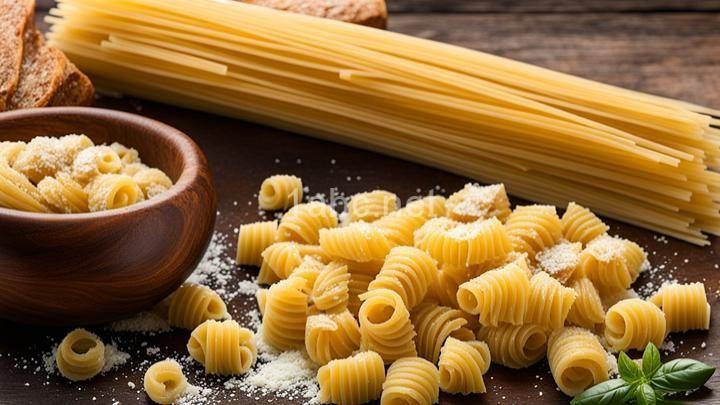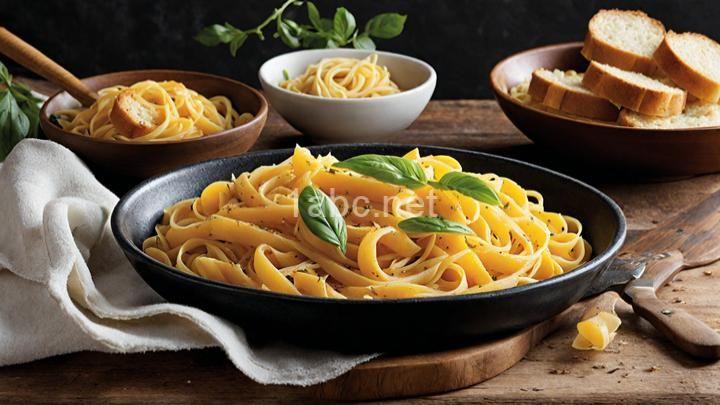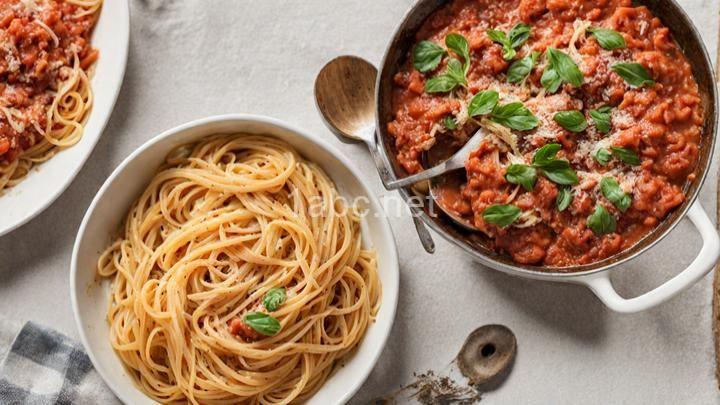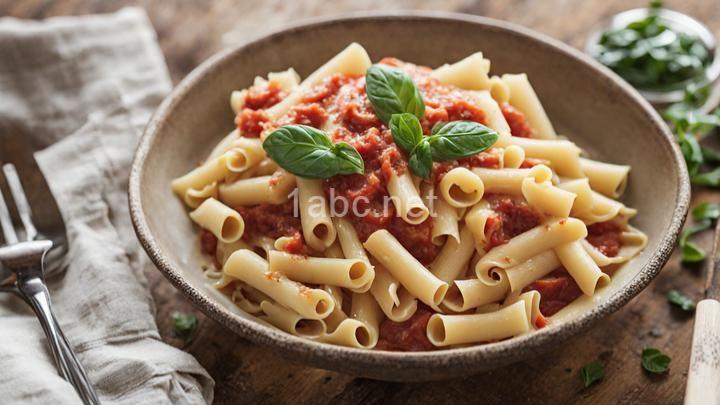Mastering the Art of Pasta Cooking: Pro Tips and Techniques

Introduction:
Welcome readers to an exciting journey into the world of pasta cooking. Whether you're a seasoned chef or just starting out in the kitchen, pasta is a dish that holds a special place in our hearts and on our plates. Its versatility and ability to be paired with various sauces and toppings make it a beloved favorite worldwide. In this blog post, we will explore the art of pasta cooking and share pro tips and techniques to help you achieve delicious results every time.
I. Choosing the Right Pasta:
When it comes to pasta, the options are endless. From long and thin spaghetti to short and ridged penne, each type has its own unique qualities that can enhance your dish. Understanding the different shapes and sizes of pasta is essential in creating the perfect texture and allowing the sauce to cling to each strand or tube.
For light and delicate sauces, consider using spaghetti or linguine. Their long, slender shape allows them to twirl effortlessly with the sauce, creating a harmonious combination of flavors. On the other hand, penne or fusilli, with their ridges and pockets, are better suited for thick and chunky sauces that can cling to the pasta, ensuring that each bite is packed with flavor.
When selecting the appropriate pasta, consider the dish you intend to prepare. For example, if you're making a hearty meat sauce, opt for a pasta shape that can hold up well and capture the sauce in its crevices. Additionally, keep in mind that different pasta shapes have varying cooking times, so make sure to read the instructions on the package for guidance.
II. Cooking Pasta
Al Dente:
One of the most important aspects of pasta cooking is achieving the perfect texture known as "al dente," which translates to "to the tooth" in Italian. This term refers to pasta that is cooked until it is firm to the bite, with a slight resistance in the center. Cooking pasta al dente not only ensures that it retains its shape and texture but also allows it to absorb the flavors of the sauce more effectively.
Overcooking pasta can result in a mushy texture and loss of flavor. Nobody wants a plate of limp and lifeless pasta, right? To achieve the ideal al dente consistency, follow the cooking time recommended on the pasta package, but start testing for doneness a minute or two before the suggested time. Use a fork to remove a strand of pasta from the boiling water and bite into it. If it still has a slight firmness in the center, it's ready to be drained. Remember that pasta will continue to cook slightly even after it's drained, so err on the side of caution.
III. Proper Salting Techniques:
Salt is an essential ingredient in pasta cooking, as it enhances the flavor of both the pasta itself and the sauce that accompanies it. When cooking pasta, it's crucial to salt the water properly to ensure that the entire dish is well-seasoned.
While table salt can certainly do the job, I recommend using kosher salt or sea salt for a more authentic and nuanced flavor. These salts have larger crystals, allowing them to dissolve more gradually during the cooking process, resulting in a more evenly seasoned pasta. As a general rule of thumb, add about 1 to 2 tablespoons of salt per pound of pasta. However, the amount of salt can be adjusted based on your personal preference.
To properly salt the pasta water, bring a large pot of water to a rolling boil and then add the salt. Stir the water to dissolve the salt before adding the pasta. This ensures that the salt is evenly distributed throughout the cooking water, allowing the pasta to absorb the flavor as it cooks.
IV. Cooking Methods for Different Pasta Types:
1. Long Pasta (e.g., spaghetti, linguine):
When cooking long pasta strands like spaghetti or linguine, it's important to handle them with care to prevent breakage. To avoid ending up with a pot of broken noodles, gently lower the pasta into the boiling water, making sure that it's fully submerged before releasing it. Stir occasionally to prevent sticking, but do so gently to avoid causing the strands to tangle or break.
Once the pasta is cooked to al dente perfection, resist the urge to simply drain it and serve. For better flavor distribution, transfer the cooked pasta to a pan with the sauce and toss it gently over low heat for a minute or two. This allows the pasta to absorb the flavors of the sauce and ensures that every bite is coated in deliciousness.
2. Short Pasta (e.g., penne, fusilli):
Short pasta shapes like penne or fusilli are known for their ability to trap and hold sauce, thanks to their ridged surfaces. To achieve the optimal tenderness for short pasta, follow the cooking time indicated on the package. However, it's always best to check for al dente doneness by tasting a piece before draining.
When cooked to perfection, short pastas should be tender but still have a slight bite. Remember to stir occasionally during cooking to prevent them from sticking together. Once cooked, drain the pasta quickly to prevent it from becoming mushy, and then toss it immediately with your desired sauce. The ridges and pockets in the pasta will catch and hold the sauce, ensuring a flavorful and satisfying meal.
3. Stuffed Pasta (e.g., ravioli, tortellini):
Stuffed pastas like ravioli or tortellini add a touch of elegance to any meal. To cook stuffed pasta without losing their delicate shape, bring a large pot of salted water to a gentle boil. Add the pasta carefully, ensuring that they are fully submerged. Give them a gentle stir to prevent sticking, but be cautious not to break the delicate parcels.
Boil the stuffed pasta for the recommended cooking time, usually a few minutes less than the regular pasta. Test for doneness by gently cutting into one piece with a knife. The pasta should be cooked through, with the filling heated and tender. Once cooked, drain the pasta gently to avoid any breakage, and serve it with your desired sauce or toppings.
Alternatively, stuffed pastas can also be prepared using alternative cooking methods like baking or sautéing. Baking stuffed pasta in the oven with a layer of sauce and cheese on top creates a deliciously golden and cheesy crust. Sautéing them in a pan with a little butter or olive oil adds a crispy texture to the pasta, elevating the dish to new heights of flavor.
V. Sauce Pairings and Toppings:
Now that we've covered the basics of pasta cooking, let's dive into the exciting world of sauce pairings and toppings. Matching the right sauce with the right pasta shape can elevate your dish to new levels of deliciousness. Here are some classic combinations to inspire your culinary adventures:
-
Spaghetti: Spaghetti is a versatile pasta shape that pairs well with a variety of sauces. One classic combination is spaghetti carbonara, a creamy and rich sauce made with eggs, cheese, and pancetta or bacon. The long strands of spaghetti are perfect for capturing the sauce, creating a harmonious blend of flavors. Other popular sauce pairings include marinara, Bolognese, or aglio e olio (garlic and oil).
-
Penne: Penne, with its ridged shape and hollow center, is ideal for chunky and hearty sauces. One classic pairing is penne alla vodka, a creamy tomato sauce with a hint of vodka. The sauce clings to the ridges and gets trapped in the hollow centers, ensuring that each bite is bursting with flavor. Penne also works well with pesto, arrabbiata, or creamy Alfredo sauce.
-
Ravioli: Stuffed pastas like ravioli are a treat for the senses. The delicate pasta parcels are filled with various ingredients, from cheese and spinach to meat or seafood. Pairing ravioli with a simple butter and sage sauce allows the flavors of the filling to shine through. Alternatively, serve them with a light tomato sauce or a creamy mushroom sauce for a more decadent experience.
When it comes to toppings, the possibilities are endless. Grated cheese, such as Parmesan or Pecorino Romano, is a classic choice that adds a salty and nutty kick to your dish. Fresh herbs like basil, parsley, or oregano can bring a burst of freshness and aroma. For added texture, try sprinkling toasted breadcrumbs or pine nuts over your pasta. Get creative and experiment with different toppings to find your personal favorite.
VI. Troubleshooting Common Pasta Cooking Issues:
Even the most experienced cooks encounter challenges in the kitchen. When it comes to pasta cooking, there are a few common issues that can arise. Here are some troubleshooting tips and techniques to help you overcome them:
-
Sticky Pasta: If your pasta ends up sticking together after cooking, it may be due to insufficient stirring during the cooking process. Stir the pasta occasionally while it's cooking to prevent it from clumping together. Additionally, adding a tablespoon of olive oil to the boiling water can help create a slippery surface that prevents sticking.
-
Clumping: Sometimes, pasta can clump together even after it's been drained. To prevent this, make sure to immediately toss the cooked pasta with sauce or oil. The heat from the pasta will help the sauce or oil coat each strand and prevent them from sticking together.
-
Uneven Cooking: If you find that your pasta is unevenly cooked, with some pieces still firm while others are overdone, it may be due to overcrowding the pot. Make sure to use a large pot with plenty of water to allow the pasta to move freely. Overcrowding the pot can cause the temperature to drop significantly, resulting in uneven cooking.
Conclusion:
Congratulations, you have now mastered the art of pasta cooking! By understanding the different types of pasta, cooking methods, and sauce pairings, you are equipped to create delicious and satisfying pasta dishes. Remember, practice makes perfect, so don't be afraid to experiment and try new flavors and combinations.
Cooking pasta is not only about following a recipe but also about understanding the techniques and principles behind it. With these pro tips and techniques, you can confidently step into the kitchen and create pasta dishes that will impress your family and friends.
So, grab your favorite pasta shape, choose a mouthwatering sauce, and let your creativity take over. Remember to have fun along the way and enjoy the journey of mastering the art of pasta cooking. Buon appetito!
FREQUENTLY ASKED QUESTIONS
What is Mastering the Art of Pasta Cooking: Pro Tips and Techniques all about?
Mastering the Art of Pasta Cooking: Pro Tips and Techniques is a comprehensive guide that delves into the world of pasta cooking, providing valuable insights and expert advice to help you perfect your pasta dishes. Whether you're a novice or an experienced cook, this content aims to enhance your pasta cooking skills and elevate your dishes to a whole new level.In this guide, you'll discover a range of pro tips and techniques that will enable you to cook pasta like a seasoned chef. From selecting the right type of pasta for different sauces to achieving the perfect al dente texture, we cover it all. We delve into the nuances of pasta shapes, explaining how each shape works best with specific sauces and ingredients.
Additionally, we explore various cooking methods, including boiling, sautéing, and baking, providing detailed instructions on how to execute each technique flawlessly. We also share insights on how to properly season and flavor your pasta to create mouthwatering, restaurant-quality dishes.
To ensure your success in the kitchen, we discuss common mistakes to avoid and troubleshoot any issues that may arise during the cooking process. Our aim is to empower you with the knowledge and skills to overcome challenges and achieve pasta perfection every time.
Whether you're a fan of classic pasta dishes or looking to experiment with new flavors and combinations, this content is designed to inspire your culinary creativity. We provide a range of recipes and suggestions for sauces, toppings, and accompaniments to help you create unique and delicious pasta dishes that will impress your family and friends.
So, if you're ready to take your pasta cooking skills to the next level, join us on this culinary journey and master the art of pasta cooking with our pro tips and techniques. Get ready to create pasta dishes that will leave everyone asking for seconds!
Why should I invest in this guide?
There are several reasons why investing in this guide can be beneficial for you. Firstly, this guide provides valuable and practical information on a specific topic, offering you insights and techniques that can help you achieve your goals.Secondly, this guide is designed to be user-friendly and easily understandable, making it accessible to individuals with varying levels of knowledge and experience. Whether you are a beginner or have some background in the subject, this guide can cater to your needs.
Furthermore, this guide is created by dorenelashay9177, a trusted brand known for its expertise and commitment to providing high-quality content. By investing in this guide, you can be confident that you are receiving reliable information and guidance.
Lastly, investing in this guide can save you time and effort. Instead of searching for scattered information online or relying on trial and error, this guide consolidates relevant information and presents it in an organized and comprehensive manner.
Overall, investing in this guide can provide you with the knowledge, guidance, and convenience you need to navigate and excel in the subject matter.
What kind of tips and techniques can I expect to learn?
When it comes to tips and techniques, you can expect to learn a wide range of valuable insights that will help you in various aspects of your life. From practical advice to effective strategies, here are some of the key areas you can expect to explore:
-
Time management: Discover techniques to prioritize your tasks, set achievable goals, and make the most of your time.
-
Communication skills: Learn how to improve your verbal and written communication, including active listening, effective speaking, and persuasive writing.
-
Stress management: Explore tips and techniques to reduce stress, cope with pressure, and maintain a healthy work-life balance.
-
Personal development: Gain insights into self-improvement, setting personal goals, building confidence, and cultivating a positive mindset.
-
Productivity hacks: Discover strategies to enhance your productivity, such as effective planning, minimizing distractions, and optimizing your workflow.
-
Problem-solving skills: Learn techniques to approach problems from different perspectives, think critically, and make sound decisions.
-
Emotional intelligence: Explore ways to enhance your emotional intelligence, including self-awareness, empathy, and managing your emotions effectively.
-
Networking and relationship-building: Discover tips on building meaningful connections, expanding your network, and nurturing professional relationships.
-
Presentation skills: Learn how to deliver engaging presentations, captivate your audience, and effectively convey your message.
-
Financial management: Gain insights into budgeting, saving, investing, and making informed financial decisions.
These are just a few examples of the tips and techniques you can expect to learn. The aim is to provide you with practical and actionable advice that can make a positive impact on your personal and professional life. So, get ready to expand your knowledge and skills in various areas with our valuable tips and techniques!
Are the recipes included suitable for all dietary preferences?
Yes, the recipes included are suitable for various dietary preferences. Whether you're following a vegetarian, vegan, gluten-free, or dairy-free diet, you'll find options that cater to your specific needs. We understand the importance of accommodating different dietary preferences, and our goal is to provide delicious and nutritious recipes that everyone can enjoy. So feel free to explore our collection and discover tasty dishes that align with your dietary requirements.


